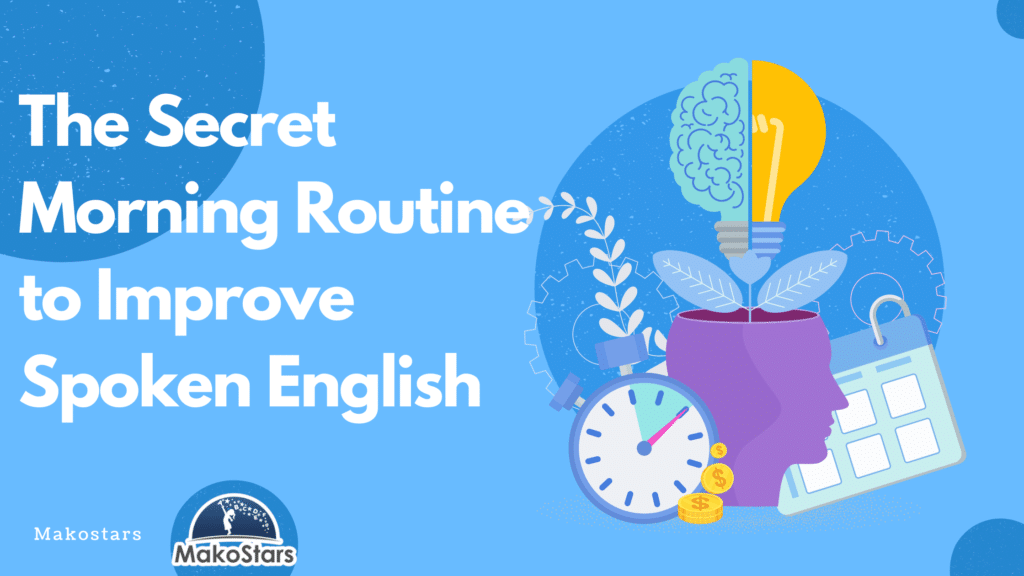Companies that emphasize language learning and diversity see a 22% reduction in employee turnover. Speaking activities for ESL learners create more than just language skills—they build connections.
Teachers and learners don’t get many chances to practice English conversation. Your lunch break could be the perfect solution. At Claremont Immersion School, “The Lunch Bunch” program has helped students build stronger relationships while they practice their language skills.
Research shows that language lunches boost cognitive skills and problem-solving abilities. You might be a beginner who wants to become skilled at simple conversations or an advanced learner looking to nail workplace communication. These lunchtime speaking activities can reshape your English fluency.
Want to turn your lunch break into a powerful learning tool? Let’s take a closer look at some practical ESL speaking activities you can start today, regardless of your skill level.
Table of Contents

Setting Up Your Lunchtime ESL Speaking Practice
Your lunch hour can become a productive ESL practice session with minimal effort and maximum results. Let’s look at ways to set up an effective lunchtime speaking practice.
Finding the right time and space
A one-hour lunch break gives you the perfect chance for ESL practice. The full hour might seem overwhelming at first. Starting with 15-minute “language coffee breaks” could work better. These shorter sessions pack the same punch while asking less from participants.
The location choice needs creative thinking. Your company’s cafeteria table works great, just like a quiet corner in a nearby coffee shop. No need for a formal classroom—successful speaking groups thrive naturally in casual spots. To name just one example, community centers often have small rooms that fit intimate conversation groups perfectly.
The best environment should feel comfortable without too much background noise. Lively conversations will create some buzz, but everyone should hear each other clearly without raising their voice.
Inviting colleagues to join
A speaking group works best with four to six people who meet regularly every week or two. Here’s how to bring people together:
- Use digital platforms like your company’s chat room or social media to spread the word
- Put up a small poster near your chosen meeting space
- Personally invite colleagues with a simple, “Want to join our lunchtime English practice on Thursday?”
Your invitation should highlight how relaxed and pressure-free these sessions are. Many people hold back because they worry about making mistakes or feeling judged.

Creating a supportive environment
A supportive atmosphere is vital for successful speaking practice. The first session should make it clear that mistakes are not only okay but expected as everyone learns.
Being open about your own language errors works wonders. This builds trust and creates a safe space where people feel ready to take risks with their English.
Small victories deserve recognition—someone uses a new phrase correctly or explains a complex idea well. This kind of positive feedback keeps everyone motivated and eager to participate.
Pair activities before group speaking give participants a chance to practice their responses quietly first. This gradual approach builds confidence naturally.
If you haven’t read our 15-minute guide on how to improve your spoken English—even when you’re alone—check it out here! This simple yet effective routine can help you build confidence and fluency in no time.

Quick ESL Speaking Activities for Beginners
Your lunchtime ESL group needs these simple speaking exercises that boost confidence and communication skills once it’s a few weeks old.
Simple introduction games
Introduction games make perfect icebreakers for new ESL groups. “Two Truths and a Lie” works exceptionally well at first meetings. Students write three statements about themselves (two true, one false). The group asks follow-up questions to spot the lie. This naturally sparks conversation and builds vocabulary.
“Find Someone Who” is another great activity. Students get a grid with sentences like “_______ has been camping”. They turn these into questions and walk around to collect signatures from peers who say “yes.” This creates natural chances for follow-up chats.
Regular groups can try “The Name Game.” Each person says their name and something they like that starts with the same letter: “I’m Alice and I like apples”. The next student repeats previous answers before adding their own. This helps reinforce pronouns and vocabulary naturally.
Picture description exercises
Picture descriptions give beginners structured speaking practice. Students should learn simple vocabulary to describe images: foreground, background, center, left, right, top, bottom.
The activity works best when students:
- Look carefully at the picture before speaking
- Talk for the entire allocated time
- Use phrases like “In the picture I can see…” or “On the left/right…”
Students shouldn’t worry if they don’t know specific words. They can use alternatives like “It looks like…” or “It might be…”.
Basic question and answer routines
Questions about daily routines create great conversation opportunities because everyone knows about morning activities, mealtimes, and schedules.
Start with direct questions like “What is the first thing you usually do when you wake up?” or “At what time do you usually eat lunch?”. These questions help students form complete sentences and practice meaningful language.
Students gain confidence and move to “Why” questions that need detailed answers, such as “Why do you check the time during the day?”. This natural progression builds fluency at a comfortable pace.
Intermediate Speaking Activities for Confident Conversations
Intermediate learners need activities that encourage more complex exchanges after they become skilled at simple conversations. These next-level speaking exercises help build confidence. They also expand vocabulary and improve fluency.
Topic-based discussions
Natural chances for practicing extended conversations emerge through topic-based discussions. Most adults find certain discussion topics strike a chord with them:
- Travel and cultures – Participants can share personal stories and learn geography-related vocabulary through travel discussions.
- Food and cooking – Everyone loves talking about their culinary priorities. This engaging topic gets more and thus encourages more conversation.
- Work and professional life – Career talks bring people together through shared experiences and build workplace terminology.
- Environment and current issues – Environmental topics spark thoughtful exchanges that can branch into related discussions.
The best way to aid productive conversations is to prepare 5-7 open-ended questions about each topic beforehand. Quality discussions emerge when participants express opinions instead of providing simple yes/no answers.

Would you rather questions
“Would you rather” questions give speakers two choices and ask them to explain their reasoning. This format naturally helps practice comparatives, conditionals, and opinion expressions—grammar structures intermediate learners should master.
Effective examples include: “Would you rather have more time or more money?” “Would you rather live in a big city or a small town?” “Would you rather be poor and happy or miserable and rich?”
A simple “Why?” after each response transforms a simple choice into a chance for extended speaking practice.
News article discussions
News-based activities connect language learning with ground content. The article selection should focus on:
- Topic appropriacy – Pick subjects that interest your group
- Length – Articles should be concise to avoid overwhelming learners
- Language content – Search for useful vocabulary and grammar structures
Start with pre-reading activities like predicting content from headlines or discussing related pictures. Move beyond simple comprehension with thought-provoking questions that encourage opinion sharing.
News discussions help intermediate learners especially when you have authentic vocabulary within contextual frameworks. This makes complex language more available and meaningful.

Advanced ESL Activities for Workplace Communication
ESL learners need workplace-specific language practice to advance their careers. Advanced speaking activities give them the language tools they need to succeed in English-speaking workplaces.
Role-playing work scenarios
Professional role-plays create real-life practice that matches actual workplace situations. The first step is picking scenarios that fit your industry:
- Business meetings where people share ideas
- Job interviews with tough questions
- Client negotiations that need persuasive language
The best way to make this work is to give out role cards with character backgrounds and goals. One person might play “a manager announcing budget cuts” while others act as “concerned team members.” These clear guidelines help learners use the right language level—formal or casual—for different work situations.
Role-playing helps people feel more confident about workplace communication rules. These unwritten rules are vital for career growth. These structured exchanges help participants develop empathy and emotional intelligence, which are great resources in shared work environments.
Debate-style discussions
Workplace debates encourage critical thinking and advanced language skills. The topics should matter in real workplaces:
- Should AI take over certain jobs?
- Does remote work beat office work for productivity?
- Should companies chase profits or social good?
Town hall debates work really well. Participants get “agree” or “disagree” positions whatever their real opinions. This pushes speakers to research and state viewpoints outside what they usually think.
Impromptu speaking challenges
Workplace communication often happens without warning. Impromptu speaking helps people learn to organize their thoughts fast—a great professional skill.
The “Character Card” exercise works well. People get a surprise professional role and must give a one-minute speech right away. Another option is “Random Sentence Integration” where speakers weave unexpected sentences into work conversations.
These advanced speaking activities turn lunch breaks into powerful professional growth sessions. They prepare ESL learners to handle real workplace communication challenges effectively.
Next up is our evening English learning habits , have a look here! These simple yet powerful strategies will help you end your day productively while boosting your ESL skills.

Conclusion
ESL activities during lunch provide a practical path to English fluency, whatever your current skill level. These casual practice sessions help you build language skills and create meaningful connections with colleagues.
Simple introduction games lead to topic-based discussions that help you become skilled at workplace communication scenarios. Each step strengthens your English speaking abilities. These activities blend naturally into your daily routine without disrupting work schedules.
Language learning runs on consistency and practice. Your lunch break gives you the perfect chance to revolutionize simple English skills into confident, professional-level communication. Small steps and commitment will help your English speaking abilities grow each day.



